Venice was built on pre-existing small sand- and mud banks. The first inhabitants travelled from one island to the other, for example over to the Doge’s palace, the former political centre, or Rialto, the former commercial and trading centre, by boat.
Nowadays Venetians normally walk to school, to work, to shop and use boats mainly for leisure during weekends, especially in the summer months.
How can we re-discover Venice from the water?
You can discover Venice from the water in many different ways.
The most comfortable solution is hiring a private water-taxi and a guide.
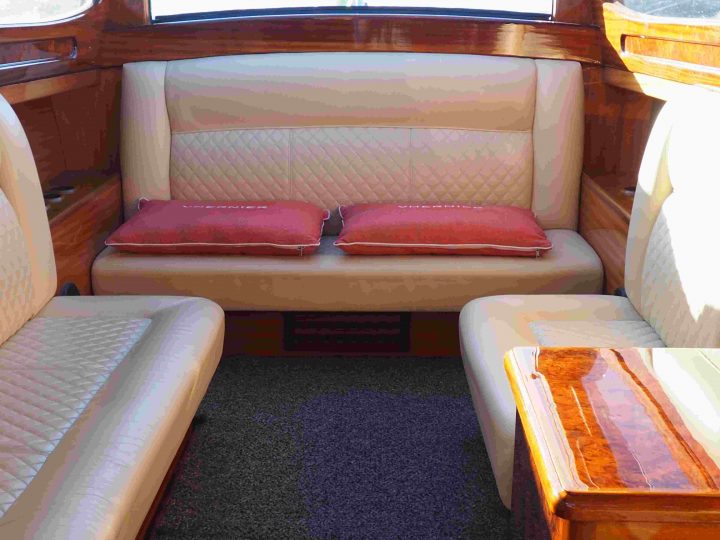
interior of a private water-taxi
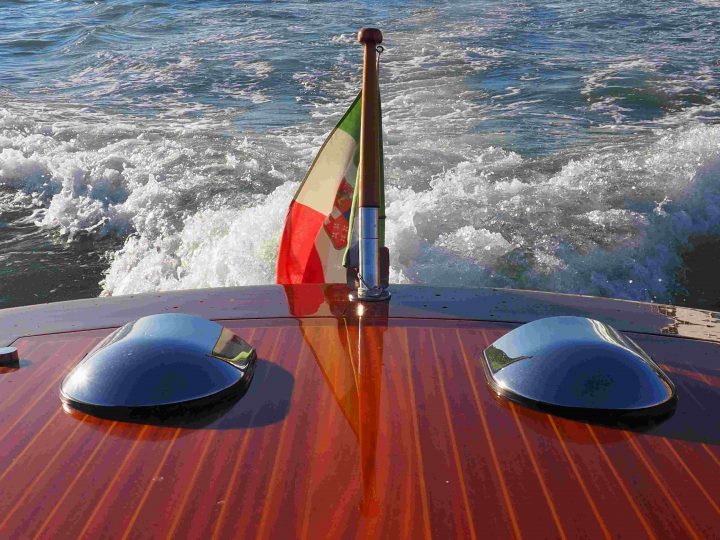
private water-taxi with Italian navy flag
Enjoy a virtual ride; this is a 1 hour ride reduced to 1 minute:
https://youtu.be/4ZE9yaM7Vpc
We could start with our nice wooden boat (and fridge with cold drinks in summer) from San Marco.
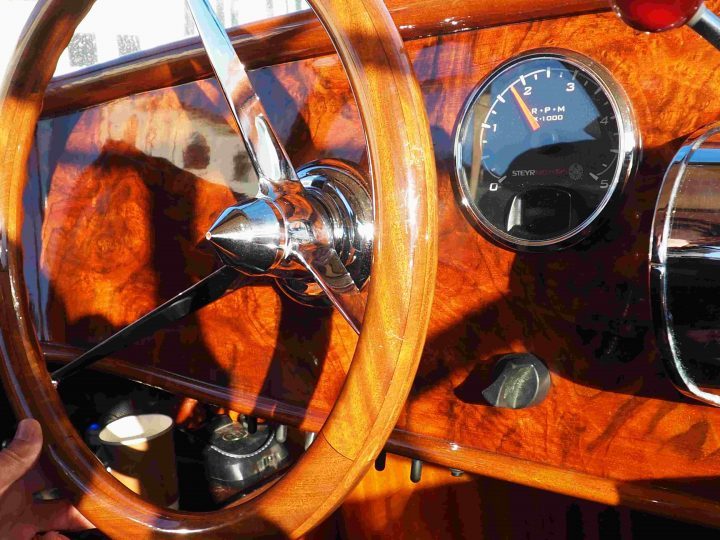
steering wheel of a private watertaxi
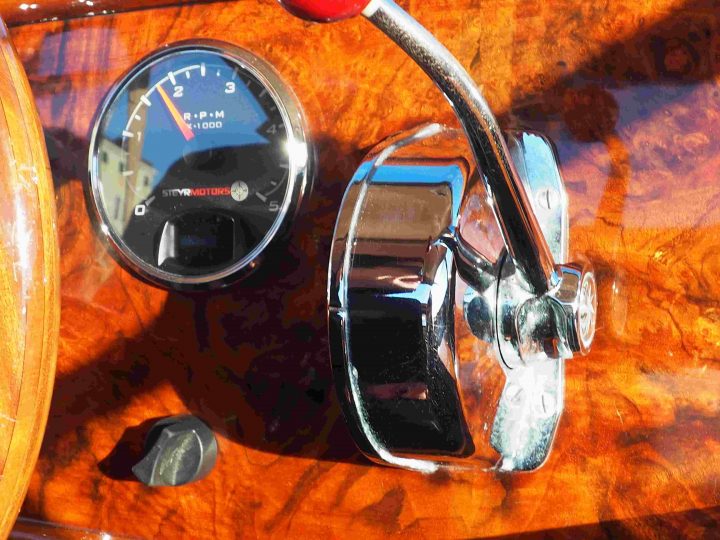
changing gears of a private water-taxi
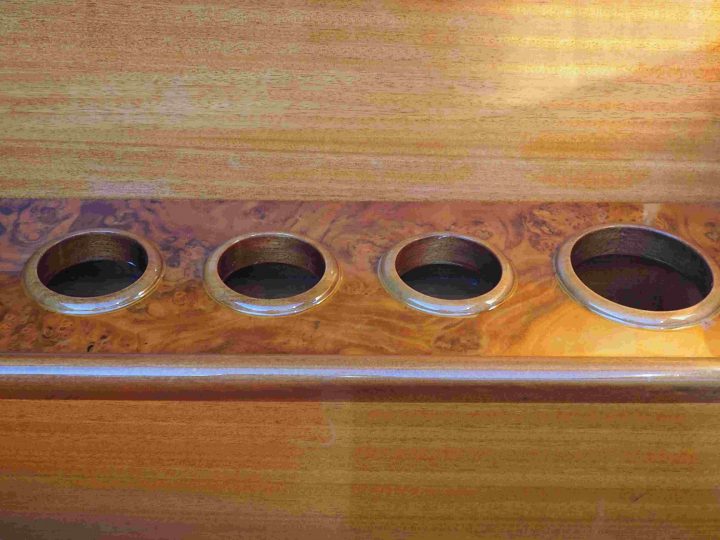
guess what these are for…
We admire the famous Bridge of Sighs and prison from the water and head first over to the Castello district.
What fun for kids to sit at the back of our nice boat on white cushions and drive underneath bridges, everyone will have to duck in the case of a high tide …
Kids normally tend to play with their hands to reach out to try and touch the arch of the bridge. I have to explain that it could be dangerous in case of an old piece of iron hanging down.
Suddenly the kids´ fingers will point out amazed to the left to a leaning bell-tower.
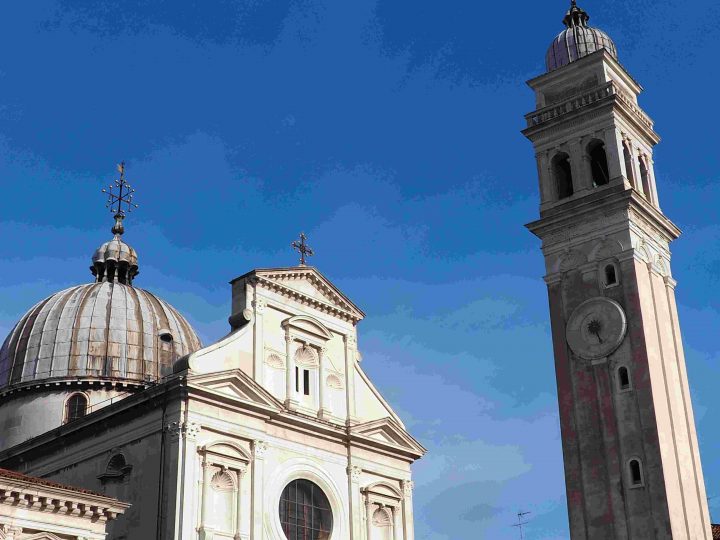
the Greek church of San Giorgio in Venice and its leaning belltower
Let us learn more about it.
Then a few minutes later the kids will spot two traffic signs and get the meaning of the sign ‘senso unico’ and often also of ‘ 2,20 m’.
Then bypassing one gondola or sandolo boat on the right, driving underneath a bridge with the sign H, we reach the scenic square campo Santi Giovanni e Paolo with a lot of history and anecdotes, just by the hospital.
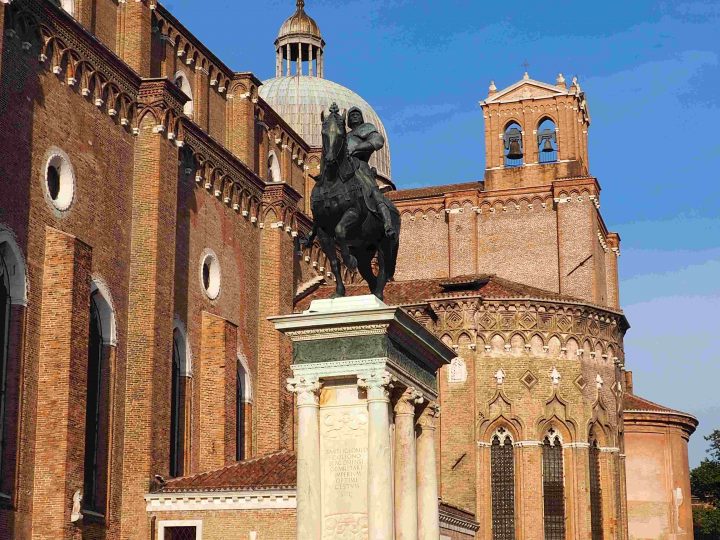
Square ‘campo’ Santi Giovanni e Paolo in Venice
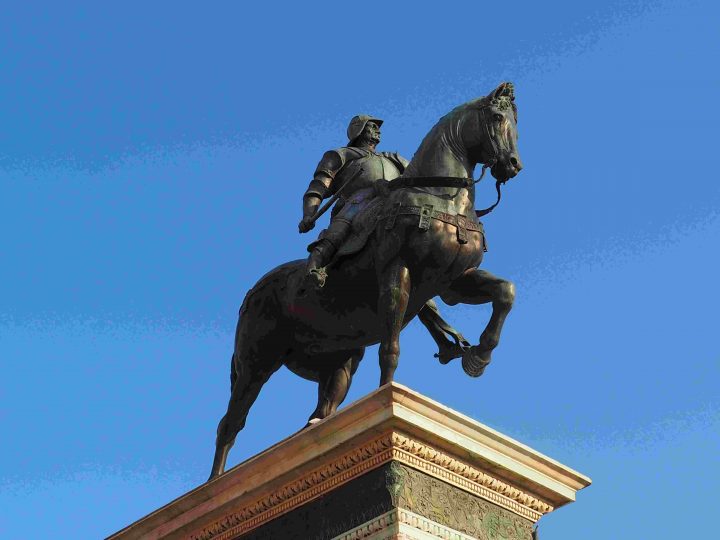
detail, equestrian monument to Bartolomeo Colleoni
The younger ones find it amazing: ambulances are yellow orange boats (like fire brigades, police units, garbage boats, silver hearses etc).
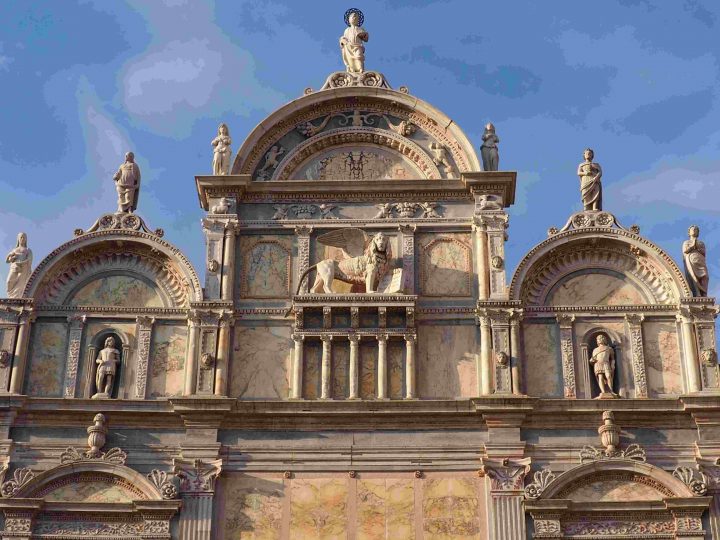
facade of Scuola di San Marco, nowadays one of the entrances to the Venetian hospital
We will accelerate our speed as we are navigating around the northern part of Venice. Air will be caressing our face and blowing our hair. The next part of our ride will take us to artificially planned islands in Cannaregio, exposed to the sun in the summer (so no soul seen walking there) and to the cold winds in the winter.
One, two skeletons on the corner of a big building catch our special attention …
And then we will ride down the main canal, the Grand Canal, back to San Marco.
Hundreds of gorgeous facades … talking about water we will mention the English -speaking poet Lord Byron who reached Venice in November 1816 after having left ‘the tight little island’. He was already a pretty famous star, thanks to his first 2 cantos of Childe Harold’s Pilgrimage. He was a good swimmer, he also won a match and had his own gondolier Tita Falcieri. In his letters he wrote ‘I like the gloomy gaiety of their gondolas and the silence of their canals’.
A good time for our boat ride would be in the afternoon, as there are restrictions on the Grand Canal by Rialto until 3 pm.
If a private water taxi is too expensive, then opt for using an ACTV (1) public boat; especially if you are a small family 2 adults 1 or 2 children it should work out fine, in the late afternoon around 5 pm.
Download map of public boat lines in Venice here
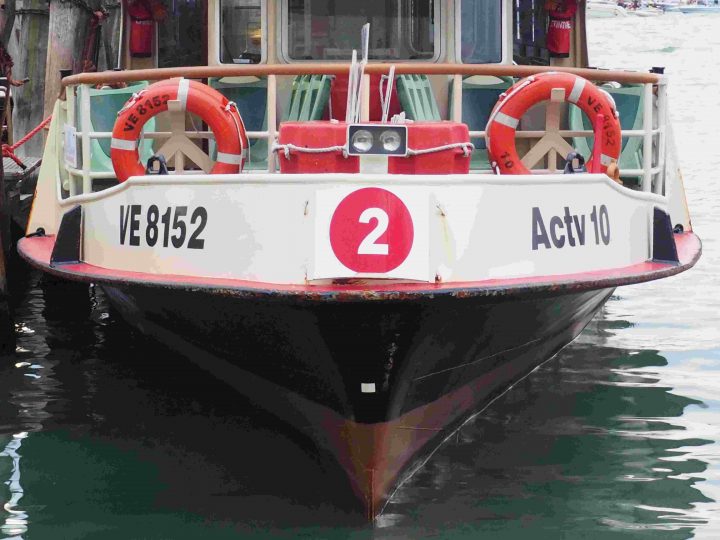
ACTV public boat line no. 2
Board boat line no. 2 from San Marco San Zaccaria by the equestrian monument of Victor Emanuel II and cross over to and drive down the Giudecca Canal, then passing by the old and the new harbour and the modern parking island Tronchetto, you will reach the Grand Canal and ride from Piazzale Roma and the train station down to the Rialto bridge, the Accademia bridge and end at San Marco.
This takes approx. 1 hour and 5 minutes. At the moment the ticket costs 7,5 E per person; a 24 hours’ pass 20 E.
You will ride on a public boat down the Grand Canal and Giudecca Canal, unfortunately through none of the smaller canals where public boats cannot go.
Another very brief way of enjoying the Grand Canal is crossing in one of the 3 points with a Traghetto Gondola
Santa Maria del Giglio – Salute
Sant’Angelo – San Tomà
Santa Sofia – Pescaria
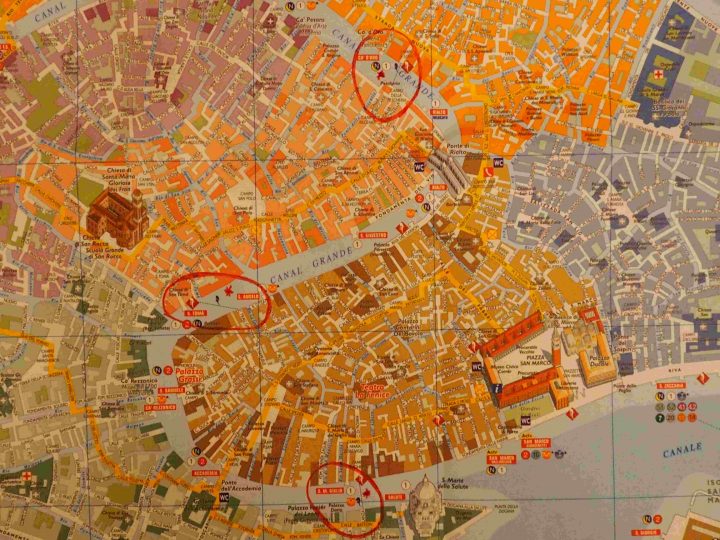
Traghetto stations on the Grand Canal
0,70 Euro is what Venetians pay, 2 Euro non Venetians.
Enjoy Venice and its reflections on the water!

reflections on the water
(1)
The public company is called ACTV.
The first public boat, named after the Queen Regina Margherita, navigating on the Grand Canal was in 1881, in occasion of a congress.
A French Paris based company (Compagnie des Bateaux Omnibus) built in Rouen 8 boats and provided for 8 years navigation on the Grand Canal.
Then another company Società Veneta Lagunare di Navigazione took over adding also the first connections to Fusina, San Giuliano, Chioggia, Cavazuccherina and Torcello.
1903 the city council decided to take over the public boat system, with one first company ACNI 23 boats were able to transport nearly 3000 passengers a day. 1930 ACNI became ACNIL. 57 units and 12000 passengers a day.
After the construction of the bridge to the mainland, inaugurated 1933, connections were established also to the mainland and after 1941 to and on the Lido replacing the tram service that was run by CIGA Compagnia Italiana Grandi Alberghi. In 2010 ACTV owned over 600 buses and 160 boats.




